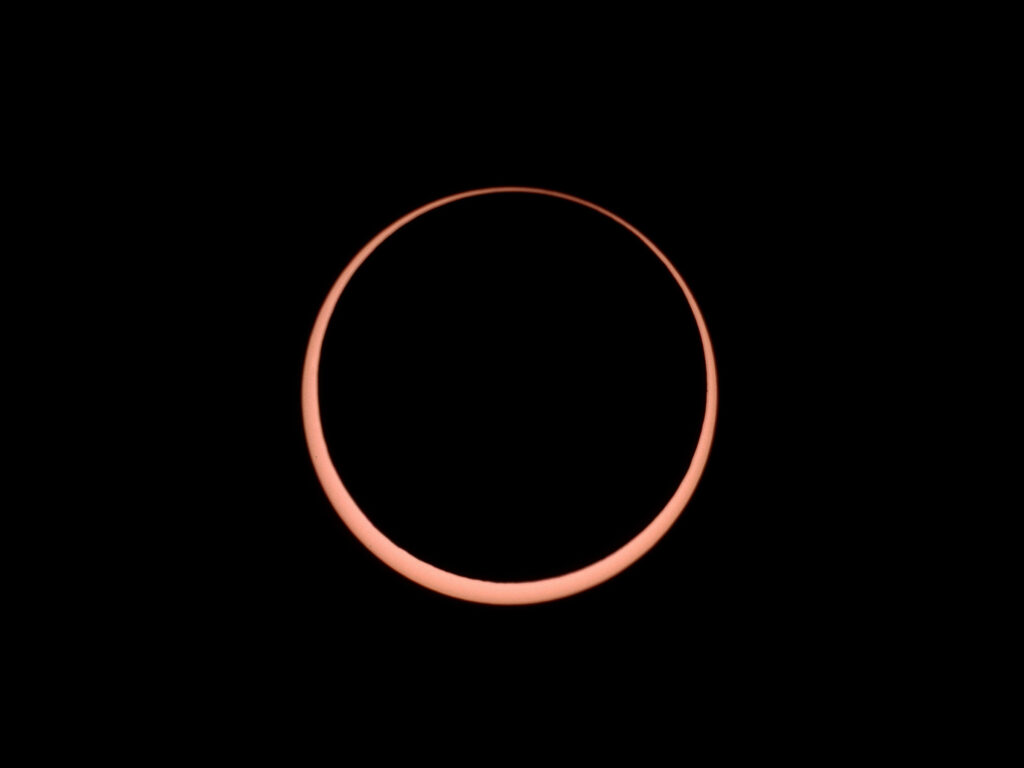Annular Eclipse 101
Total solar eclipses happen when the Moon crosses in between the Earth and the Sun, briefly blocking the Sun from our view. So, what is the difference between a total solar eclipse and an annular eclipse, like the one happening on October 14, 2023?
Annular Eclipse
An annular eclipse occurs the same way solar eclipses due, when the Moon directly lines up between the Earth and the Sun. This phase of the Moon is called New Moon and happens once per lunar month. Basically, this phase is common. Why are eclipses not visible monthly? The orbit of the Moon around the Earth is at a slight angle with respect to the ecliptic, the path of the Sun, which is why total solar eclipses do not happen every month… the Moon does not directly cross the Sun every month!
Not only is the orbit of the Moon at a tilt with respect to the Sun, but the Moon does not orbit the Earth in a perfect circle. Its elliptical orbit means that sometimes the Moon is closer than the Earth than others, which means that sometimes the Moon is bigger in our sky than others. An annular eclipse occurs when the New Moon falls on the ecliptic at one of the farther points in its orbit. This leaves a ring of the Sun still visible. This ring is called an annulus, and therefore this type of eclipse is called an annular eclipse.

What will you see on October 14, 2023?
To determine what you can see for this upcoming annular eclipse, I recommend the eclipse calculators on timeanddate.com. This image is a quick way to see if you’re along the path that will see an annular eclipse or a partial eclipse.
For those of us who live in San Diego, we will be able to see a partial eclipse. But it will be a good one! About 70% of the Sun will be covered by the Moon. That makes it an even better viewing opportunity for us than next April’s total solar eclipse, where San Diego will see another partial eclipse of about 50%.
Here are how the paths of totality compare for both events:

If you live along the path of totality, I hope you’ll have a chance to witness this event. Otherwise, you’ll have to wait until February 2046 to see another annular solar eclipse in the contiguous United States.
Eclipse Party!
It is important to protect your vision while observing an eclipse. NASA has a great eclipse safety page. So does the American Astronomical Society.
Check your local libraries. Many of them are offering free eclipse glasses while supplies last. If you’re in San Diego, please join us at the Fleet Science Center for a solar eclipse viewing party!

The eclipse will start a bit after 8:00 AM, and it’ll reach its maximum coverage at 9:26 AM. It will end a bit before 11:00 AM. We’ll have free activities outside from 8:00-11:00 AM, including safe viewing opportunities. We hope to see you there!
Wishing you clear skies!
Follow this page for more information about eclipses.



